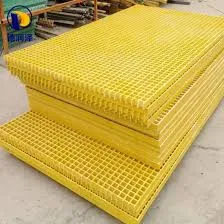
-
 Afrikaans
Afrikaans -
 Albanian
Albanian -
 Amharic
Amharic -
 Arabic
Arabic -
 Armenian
Armenian -
 Azerbaijani
Azerbaijani -
 Basque
Basque -
 Belarusian
Belarusian -
 Bengali
Bengali -
 Bosnian
Bosnian -
 Bulgarian
Bulgarian -
 Catalan
Catalan -
 Cebuano
Cebuano -
 China
China -
 China (Taiwan)
China (Taiwan) -
 Corsican
Corsican -
 Croatian
Croatian -
 Czech
Czech -
 Danish
Danish -
 Dutch
Dutch -
 English
English -
 Esperanto
Esperanto -
 Estonian
Estonian -
 Finnish
Finnish -
 French
French -
 Frisian
Frisian -
 Galician
Galician -
 Georgian
Georgian -
 German
German -
 Greek
Greek -
 Gujarati
Gujarati -
 Haitian Creole
Haitian Creole -
 hausa
hausa -
 hawaiian
hawaiian -
 Hebrew
Hebrew -
 Hindi
Hindi -
 Miao
Miao -
 Hungarian
Hungarian -
 Icelandic
Icelandic -
 igbo
igbo -
 Indonesian
Indonesian -
 irish
irish -
 Italian
Italian -
 Japanese
Japanese -
 Javanese
Javanese -
 Kannada
Kannada -
 kazakh
kazakh -
 Khmer
Khmer -
 Rwandese
Rwandese -
 Korean
Korean -
 Kurdish
Kurdish -
 Kyrgyz
Kyrgyz -
 Lao
Lao -
 Latin
Latin -
 Latvian
Latvian -
 Lithuanian
Lithuanian -
 Luxembourgish
Luxembourgish -
 Macedonian
Macedonian -
 Malgashi
Malgashi -
 Malay
Malay -
 Malayalam
Malayalam -
 Maltese
Maltese -
 Maori
Maori -
 Marathi
Marathi -
 Mongolian
Mongolian -
 Myanmar
Myanmar -
 Nepali
Nepali -
 Norwegian
Norwegian -
 Norwegian
Norwegian -
 Occitan
Occitan -
 Pashto
Pashto -
 Persian
Persian -
 Polish
Polish -
 Portuguese
Portuguese -
 Punjabi
Punjabi -
 Romanian
Romanian -
 Russian
Russian -
 Samoan
Samoan -
 Scottish Gaelic
Scottish Gaelic -
 Serbian
Serbian -
 Sesotho
Sesotho -
 Shona
Shona -
 Sindhi
Sindhi -
 Sinhala
Sinhala -
 Slovak
Slovak -
 Slovenian
Slovenian -
 Somali
Somali -
 Spanish
Spanish -
 Sundanese
Sundanese -
 Swahili
Swahili -
 Swedish
Swedish -
 Tagalog
Tagalog -
 Tajik
Tajik -
 Tamil
Tamil -
 Tatar
Tatar -
 Telugu
Telugu -
 Thai
Thai -
 Turkish
Turkish -
 Turkmen
Turkmen -
 Ukrainian
Ukrainian -
 Urdu
Urdu -
 Uighur
Uighur -
 Uzbek
Uzbek -
 Vietnamese
Vietnamese -
 Welsh
Welsh -
 Bantu
Bantu -
 Yiddish
Yiddish -
 Yoruba
Yoruba -
 Zulu
Zulu
frp winding machine
The Significance of FRP Winding Machines in Modern Manufacturing
In recent years, the manufacturing industry has witnessed a transformative shift towards the integration of advanced technologies designed to enhance efficiency, precision, and productivity. One such innovation that has gained significant traction is the FRP (Fiber Reinforced Polymer) winding machine. These machines play a crucial role in the production of composite materials used in various applications, ranging from aerospace and automotive industries to renewable energy sectors.
FRP winding machines are specifically designed to create composite materials by winding fibers around a mandrel in a precise and controlled manner. The use of synthetic fibers such as carbon, glass, or aramid, combined with a polymer matrix, results in a lightweight yet durable composite that possesses excellent mechanical properties. This process is particularly vital for creating cylindrical structures, including pipes, tanks, and pressure vessels, which are widely used across numerous industries.
The Significance of FRP Winding Machines in Modern Manufacturing
Moreover, the FRP winding process is notable for its efficiency. Traditional methods of producing composite materials often require significant manual labor and extensive time. In contrast, winding machines can operate continuously, increasing production rates while reducing labor costs and minimizing human error. This increased efficiency not only lowers operational costs but also enables manufacturers to meet growing market demands swiftly.
frp winding machine

Another important aspect of FRP winding technology is its adaptability. These machines can be configured to accommodate various shapes, sizes, and types of materials, making them suitable for a wide range of applications. From small, intricate components to large-scale industrial products, the versatility of FRP winding machines allows manufacturers to innovate and develop new solutions that meet evolving industry needs. This adaptability is particularly crucial in sectors like renewable energy, where the demand for lightweight and durable materials for wind turbine blades and other components is ever-increasing.
Furthermore, the environmental benefits of using FRP winding machines cannot be overlooked. The production of FRP composites often results in less waste compared to traditional materials, as the precise winding process allows for better material utilization. Additionally, many modern winding machines are designed with sustainability in mind, incorporating features that promote energy efficiency and minimize emissions during the manufacturing process. As industries worldwide shift towards greener practices, the role of FRP winding technology is more relevant than ever.
However, the successful implementation of FRP winding machines also presents challenges. Operators must be adequately trained to handle sophisticated machinery and understand the nuances of composite material production. Additionally, while the initial investment in these machines can be substantial, the long-term benefits and cost savings often justify the expense.
In summary, FRP winding machines represent a significant advancement in the manufacturing of composite materials. Their ability to produce high-quality components efficiently and sustainably positions them as a valuable asset across various industries. As technology continues to evolve, the role of these machines is likely to expand, driving further innovation and efficiency in manufacturing processes. By embracing the capabilities of FRP winding technology, manufacturers can position themselves at the forefront of their respective industries, ready to tackle future challenges with resilience and ingenuity.









